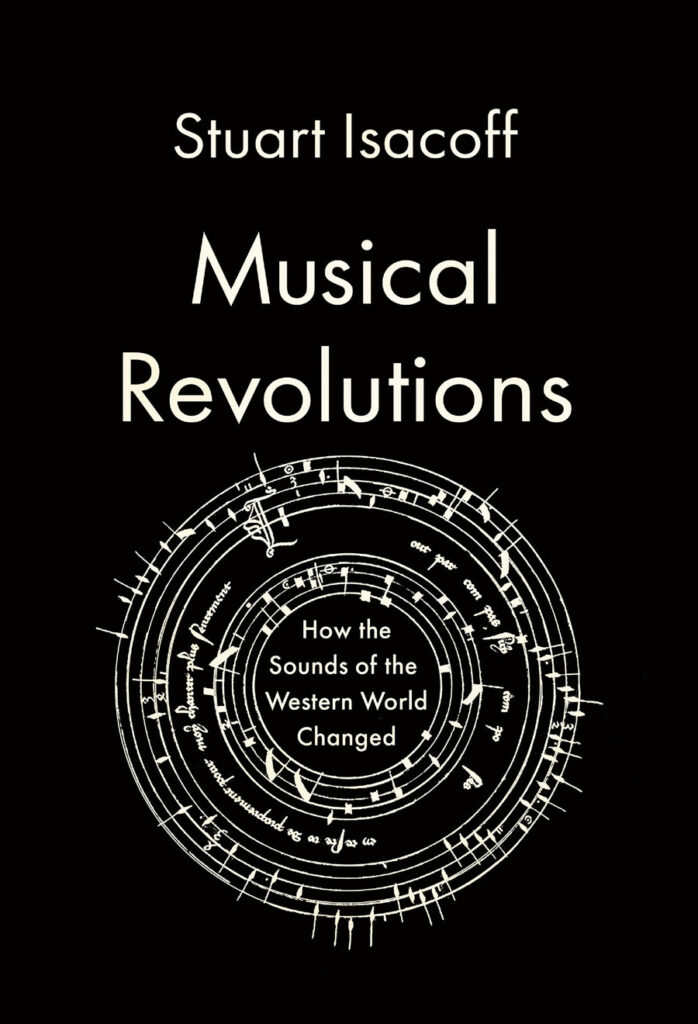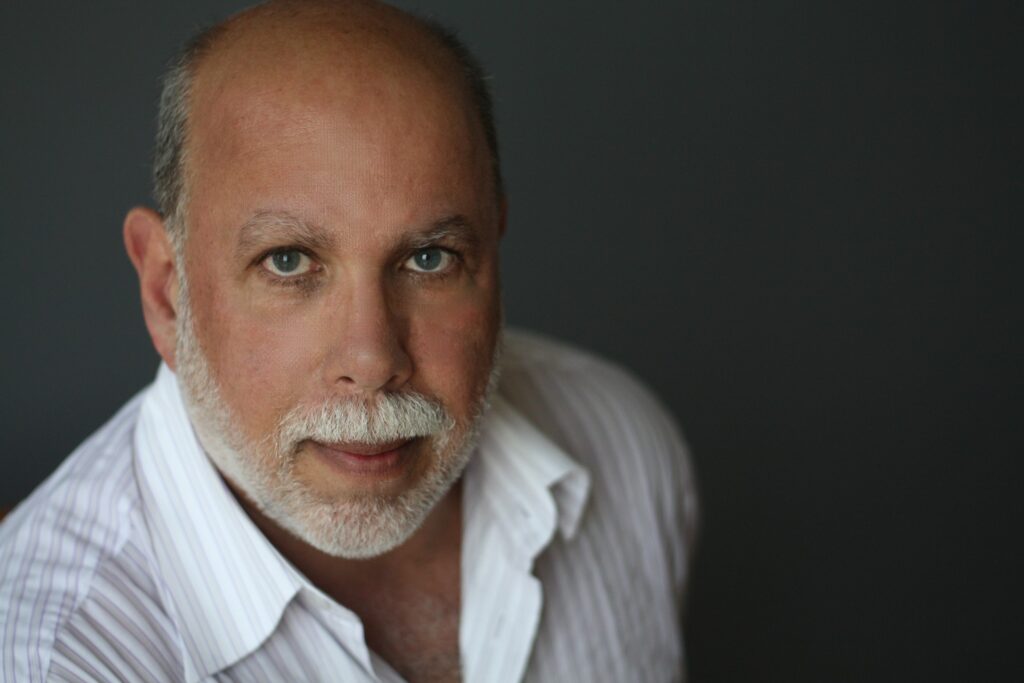Musical Revolutions – An Isacoff Exploration
The new book “Musical Revolutions” encompasses nearly two millennia of Western music and investigates how the sounds of the Western World changed. Piano Street had a talk with its author, Stuart Isacoff, a performing pianist, prize-winning author and lecturer.
 In his latest book, Isacoff tells the exciting story of Western music’s evolution by investigating core questions like: From noise to music? Music and the natural laws of the universe? The discord as the primary sound of modernity? Isacoff’s whole-grip is mapping the birth of opera in a Venice rebellion against the church, Baroque, Romanticism and atonal music; bebop and cool jazz; Bach, Mozart and Liszt; Miles Davis and John Coltrane. The book covers issues that we now take for granted and how music became entangled in politics, culture, and economics, including achievements of people of color and women, whose paths to success were the most difficult.
In his latest book, Isacoff tells the exciting story of Western music’s evolution by investigating core questions like: From noise to music? Music and the natural laws of the universe? The discord as the primary sound of modernity? Isacoff’s whole-grip is mapping the birth of opera in a Venice rebellion against the church, Baroque, Romanticism and atonal music; bebop and cool jazz; Bach, Mozart and Liszt; Miles Davis and John Coltrane. The book covers issues that we now take for granted and how music became entangled in politics, culture, and economics, including achievements of people of color and women, whose paths to success were the most difficult.
Patrick Jovell: Stuart, you are the kind of writer who has the credentials required to take a whole grip on topics and issues, and inspire to alter readers’ world view. Can you tell me the incentives behind writing ”Musical Revolutions”?
Stuart Isacoff: The incentive was the same as with all of my books: to spread an understanding of important cultural issues, reaching out even to people who don’t necessarily have a solid background in musical history. And to write it as gracefully and colorfully as I can. It was important to me that, in explaining the astonishing turning points in music history, I provide a wide context, referencing developments in art, religion and other human endeavors, to shine a light on how creative impulses come to fruition. As I say in the book, even changes that seem sudden most often have precedents, and lead to other developments, fulfilling the idea of “revolution” put forth by Copernicus, of recurring cycles. Mostly, I want to help people feel the sense of awe that I do when I consider the subject.
PJ: As human beings we like to see development and history evolve in a straight line – a little bit like when we see history maps or composers’ place in history on display in a music class. At the same time we know that it really doesn’t work like that. Influences and discoveries constantly occur in different places at different times and there’s a constant battle between tradition and innovation. Some people say that it takes 50 years before we know what really happened. How should we approach the diversity and complex facts of “the not straight line”?
SI: Patrick, you make me think! It seems to me that different examples need different analyses. In some cases, there is a central idea, a sort of Platonic ideal, that manifests in different ways over time. That was what I was generally aiming for, a particular concept that arises in different forms. So the aesthetic ideal of Impressionism, for example, which is the elevation of the ordinary into the spectacular, appears at first in startling harmonies but then also shows up later in unique ways of utilizing ordinary instruments, or through scientific breakthroughs, like the harnessing of electricity in sound production. But there are other cases in which the innovation and its results are more immediately connected, as in Guido’s invention of music notation. Sometimes we can trace the changes through a long historical lens, an evolution, but sometimes the transformation is more immediate and direct, the connection very easy to see. And at times the nature of the connection is hard to discover, as in the way the French trait of using suspensions (Couperin) shows up not only in advanced harmonies of Debussy, but also in improvised lines of jazz great Charlie Parker.

PJ: First there was singing or was it rhythm? We know the result of long and short sounds creates rhythm. In your chapters “Singing from symbols” and “The birth of Opera” underlines the fact how central singing is in Western culture (or in any culture for that sake). What happened through the leap of going from the aural to the written transmission of music?
SI: Which came first, the chicken or the egg? I try to think of what the most pleasurable part of making music would be in the beginning. Singing is a wonderful thing, and probably the very first musical impulse was to make beautiful sounds with the throat. But we also all know that rhythm is infectious, often impossible to resist. In the case of rhythm, I wrote about how the sounds of chopping, grinding, and pounding of food, or the fetching of water in an African village create a kind of environmental symphony. Through these daily communal efforts, whole villages collectively sing music into existence. Life itself becomes music.
I think all transmission of music is aural. Written notation can be a helpful aid, but the more we move away from the tangible experience of actually shaping vibrations into musical expression, the more we are in danger of losing the essence and power of the art. As musical notation became increasingly complex, some things were gained – such as the ability to execute intricate counterpoint – but by focusing on sight instead of on sound, the very nature of music was also made more abstract, less visceral, and therefore more distant.
Music is partly an intellectual activity, but also a physical one. Notation is a set of instructions, but it is not music itself. Music needs to be transmitted through physical experience.
PJ: You take a firm grip on dissonance and since the introduction of the “Devils Tritone” it actually reflects the whole history of music allowing more and more complex experimentation in this field. Some say the historical tool of communication was lost with Schoenberg’s twelve-tone. We know J.S. Bach’s complexity eventually had to step back in favour of the Galant Style. Your picture is broader. Does simplicity always follow complexity as a natural reaction?
SI: Throughout music history there are wide pendulum swings. It is human nature to tire of things and seek novelty. So, Bach’s complexity led to the simplicity of Galant Style. But Classical simplicity and transparency then led to an increasing harmonic instability of the Romantic era. And the slippery, fuzzy musical structures that grew from Romanticism and Impressionism gave way to Schoenberg’s concrete system of more exact, decisive calculations, though the disappearance of tonality left many listeners clueless about how the systems actually worked. Then, Cage’s “indeterminacy” simply discarded the mathematical designs of 12-tone music and replaced them with a coin toss, embracing ever more chaos. Abstraction grew. Rootlessness flourished. And then, in rebellion against the abandonment of simple structures and pulse-based rhythms, all of which had made music harder to grasp, Minimalism offered another view: it used repetitive grooves and simple harmonic progressions, a style in which rock and World Music exerted a greater influence.
So, the landscape is forever changing. And, I predict it always will be so.
PJ: Your book is a massive run-through in time and space, yet you have chosen to single out specific names like “The Bachs, Miles Davis and Mozart”, appearing in chapter titles. Can you tell us why?
SI: As surprising as it may seem, among the countless artists who have contributed to the tradition, a very small number have made a tremendous impact, changing the direction of history. We remember their names above others because we are in awe of their accomplishments. Of course, there is always room for argument about who should be included in this list.
My choices are personal, but I think easily defended. The Bachs were astounding. Johann Sebastian was perhaps the greatest composer who ever lived; two of his sons, Johann Christian and Carl Philip Emanuel, led music in starkly different directions in their time: JC leading to Mozart’s elegant, serene lyricism, and CPE leading to the stormy, agitated approach of Haydn and Beethoven.
Miles Davis was an iconic musician who, by force of personality, took jazz in several different directions over his lifetime. Many others watched him closely to see where the future of jazz was heading. Each of these figures represent true artistic revolutionaries.
PJ: We have seen it before, and we see it now. Aggressive political leaderships force their people to find new homes and is a basis for modern American history, a younger history than that of Europe but the cradle of modern music and through the Transatlantic and Pan American links, the basis of both jazz and popular music genres throughout the whole world. You are yourself a product of the eclectic American culture Stuart. In the scope of your book, how can we understand the American influence in its most appropriate form?
SI: I grew up believing in an America that perhaps never really existed. But it was a wonderful ideal: a land that welcomed people from all around the world, offering opportunity for freedom and a rich life. In its best version, it gave rise to communities of immigrants, each contributing unique traditions and talents to the whole, creating a great fabric that embraced and nurtured everyone, and made unique artistic combinations possible. Hence the emergence of jazz, born out of the collisions of European schools, slave traditions, local flavors, and other emerging arts. Tap dance came about when Irish dancers met Black dancers in New York’s lower East Side.
As a youngster, I had it all at my fingertips: in music, I was offered the choice of classical rigor, jazz freedom, rock, World Music with its ethnic variety, and so on. I studied jazz with Sir Roland Hanna, a black man who grew up in Detroit, was self-taught through a music book he found in the street, and eventually graduated from the Juilliard School. He taught me the importance of Chopin to jazz.
And in the social turmoil of the mid-twentieth century, everything seemed possible. That is the picture of America I treasure. And if we hold on to the best of what emerges from that mix, the world will be a better place.
“A fascinating journey that begins with the origins of musical notation and travels through the centuries reaching all the way to our time.”
—Semyon Bychkov, chief conductor and music, director of the Czech Philharmonic.
“Much like Isacoff’s previous books, this is a sprawling narrative, intertwining history, politics, and musical biography, that’s as entertaining as it is informative […] Whether readers are dedicated musicologists or casual fans, they’ll enjoy this thought-provoking dive into the history of Western music.”
–Joshua Finnell, Library Journal
Comments
Wonderful site and information. Thanks